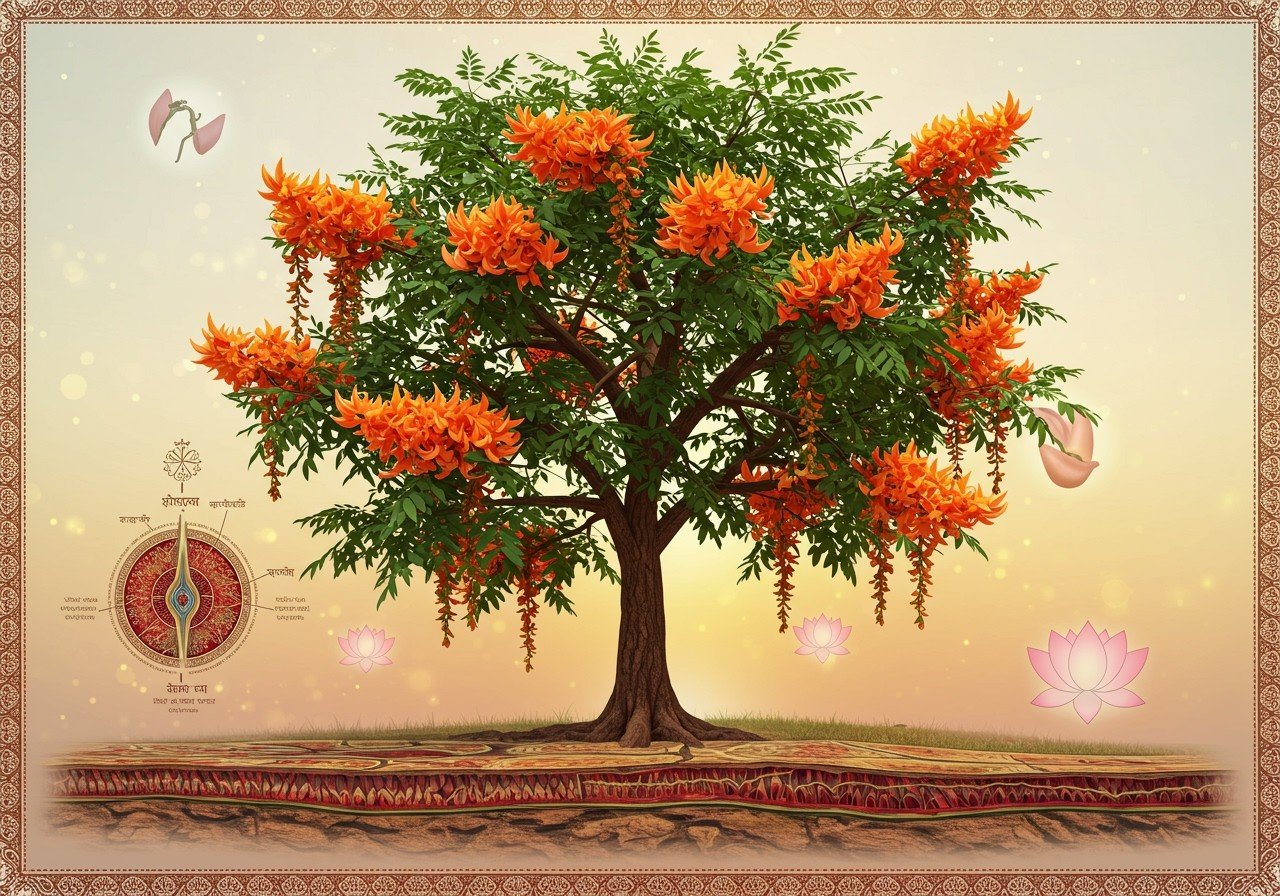
The Ashoka tree, scientifically known as Saraca asoca, holds a place of reverence in Indian culture and spirituality. Beyond its ornamental beauty, this tree carries deep symbolic meaning, plays a role in various rituals, and is even recognized for its medicinal properties in Ayurveda. Let’s delve into the rich tapestry of the Ashoka tree’s significance in Hindu tradition.
Unveiling the Beauty and Significance of the Ashoka Tree
Often associated with love, fertility, and purity, the Ashoka tree graces many Indian gardens and temples. Its presence is believed to dispel negative energies, fostering an aura of peace and tranquility. The tree’s significance extends beyond its spiritual connotations; its bark and leaves have been traditionally used in Ayurvedic remedies, particularly for women’s health. Let us explore this remarkable tree in more detail.

Recognizing the Ashoka Tree: Distinctive Features
Knowing how to identify a genuine Ashoka tree is essential, given the existence of look-alike species. Here’s a guide to its unique characteristics:
- Size and Shape: The Ashoka tree typically reaches a height of 7-9 meters, presenting a dense, spreading canopy with gently drooping branches. This compact yet elegant form makes it ideal for gardens and sacred spaces. Imagine its graceful silhouette enhancing the serenity of your home.
- Bark: The Ashoka’s bark is a dark brown, sometimes appearing almost black, with a textured, warty surface. A fresh cut reveals a pale yellowish-red inside, which deepens to a reddish hue upon air exposure. The bark thickness typically ranges from 5 mm to 1 cm.
- Leaves: The Ashoka tree has pinnate leaves, each measuring 30-60 cm long, featuring 2-3 pairs of lanceolate leaflets. These deep green leaves cluster densely, creating a lush appearance and drooping elegantly. The leaves create a sense of abundance.
- Flowers: The fragrant flowers of the Ashoka tree, a true delight to the senses, bloom from February to April. Initially orange, they mature into a vibrant red before wilting. These blossoms grow in heavy, lush bunches, adding a splash of color and a sweet aroma to the surroundings.
- Fruits: The Ashoka tree bears fruit in the form of flat, black pods that are ellipsoidal, oblong, and compressed. These pods contain ellipsoid to oblong seeds, essential for the tree’s propagation.
Differentiating the Ashoka from the False Ashoka (Polyalthia longifolia)
A common misconception arises from the “false ashoka” or Polyalthia longifolia, which bears a superficial resemblance but possesses key differences:
- Flower Color: The true Ashoka has red flowers (starting from an orange hue), while the false ashoka features apple green flowers. This distinct color difference helps in accurate identification.
- Fruit Shape: The Ashoka tree’s fruits are broad, bean-like pods containing multiple seeds. In contrast, the false Ashoka has small, spherical fruits with a single seed.
- Height: The Ashoka tree is generally shorter than the false ashoka, which often grows much taller, resembling Mediterranean cypress trees.
The Ashoka Tree in Hindu Rituals and Beliefs
The Ashoka tree’s association with love and fertility makes it a significant symbol in various Hindu ceremonies and festivals. It’s often planted near temples and homes, believed to bring positive energy and blessings. Are you looking to enhance the spiritual atmosphere of your home? Consider learning more about sacred plants in Hindu rituals. Poojn.in offers a wide selection of authentic puja items to help you create a sacred space.
Ashoka Tree in Ayurveda: Traditional Medicinal Uses
Ayurveda, the traditional Indian system of medicine, recognizes the therapeutic potential of the Ashoka tree, primarily its bark. It’s believed to be beneficial for women’s health, particularly in addressing menstrual discomfort. For those interested in exploring the benefits of Ashoka, Poojn.in offers pure Arjun Chal, another beneficial bark used in Ayurveda. We also offer pure Ashoka Chal.
Cultivating the Ashoka Tree: Tips for Growth
If you are inspired to grow this sacred tree, the Ashoka prefers well-drained, moist soil and thrives in partial to full sunlight. Regular watering is essential, but avoid waterlogging. Propagation can be done through seeds or cuttings.
Embrace the Legacy of the Ashoka Tree
From its elegant appearance to its rich cultural significance, the Ashoka tree holds a special place in Indian hearts. By understanding its distinctive features and appreciating its diverse roles, we continue to honor its legacy. Explore Poojn.in’s collection of cultural and spiritual products to bring the blessings of tradition into your life.


